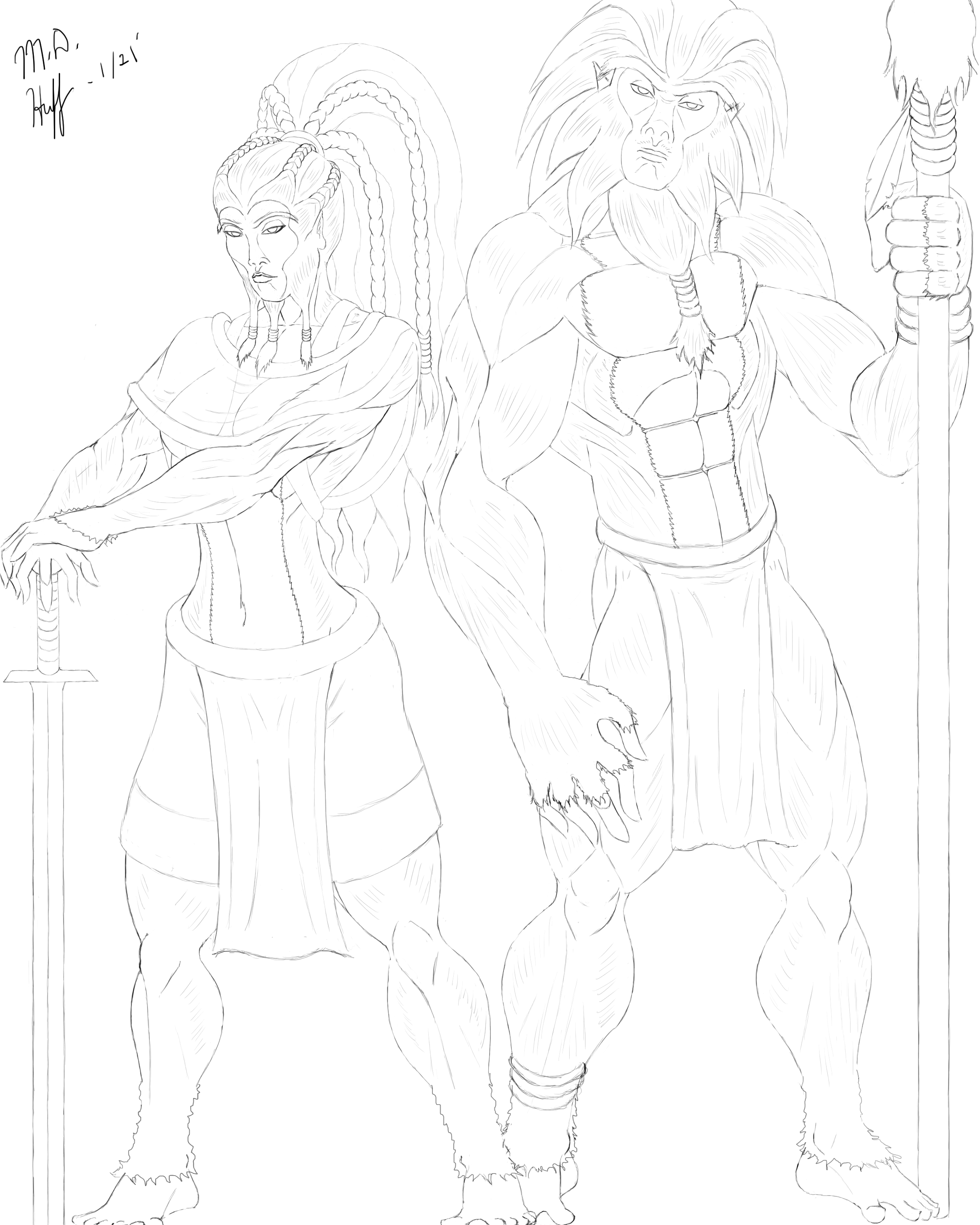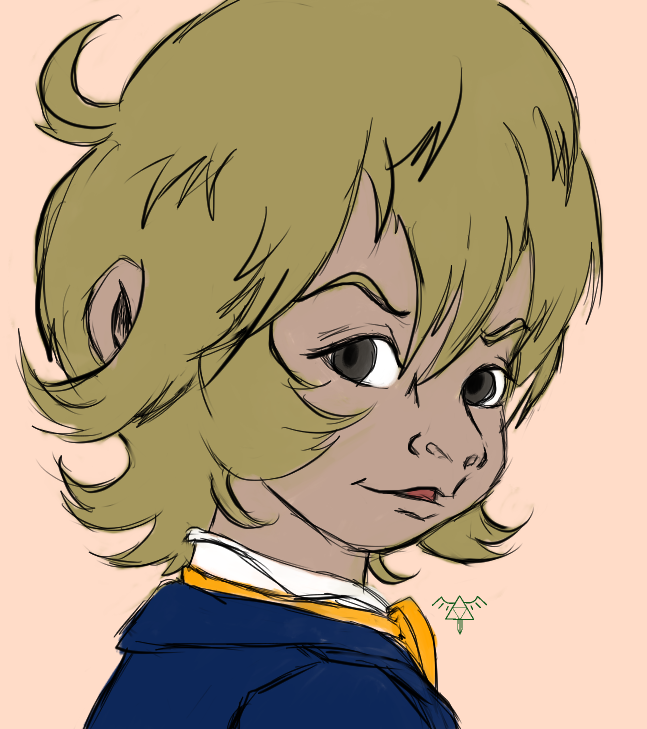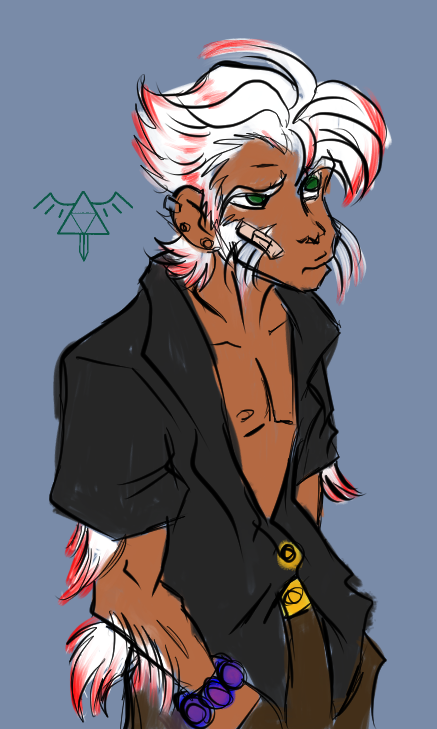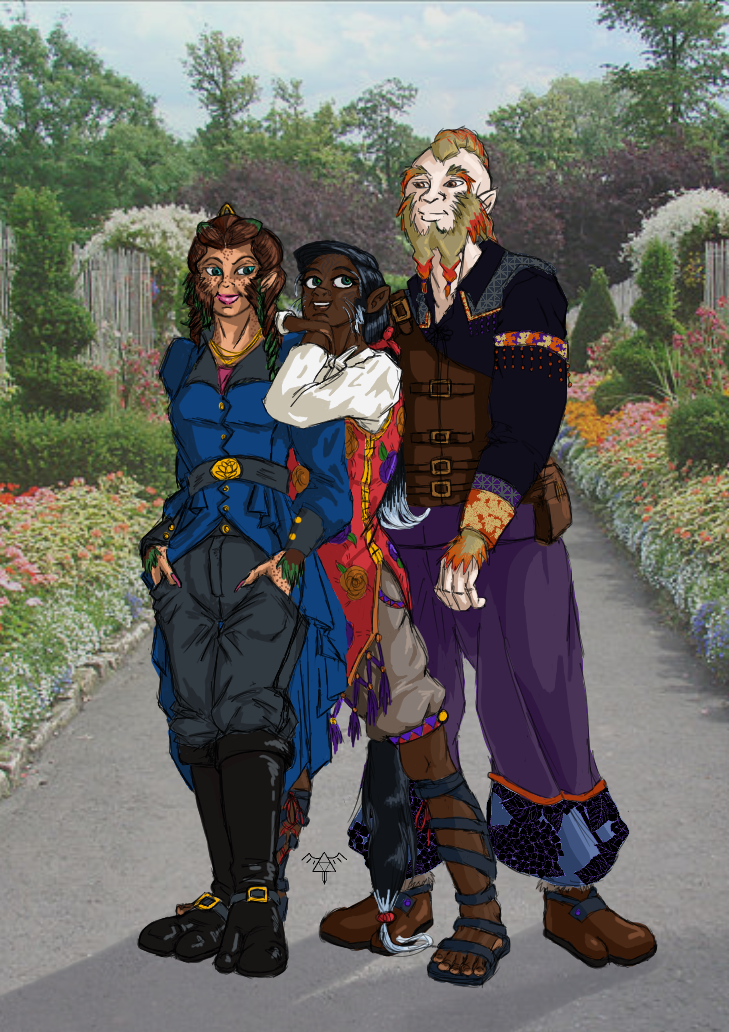Ranabiri
The Ranabiri, or Rana, for short, are prolific and widespread over the planet. They find inventive ways to adapt to the harshest of environments,using their arcane solar affinity to guide their creativity. Nearly every tribe consists mostly of their ilk and they are able to fit in almost anywhere.
Playing a Ranabiri Character
The inherent elemental magic of the Ranabiri are tied to their birth under the celestial movement of the sun. Aserere has four seasons which are divided by solstices and equinoxes. The elemental affinity of the Ranabiri is easy to detect, for when their hair isn't dyed, the tips of all are colored in shades and hues that align to their affinity.
Standard Racial Traits
Base Speed: 30ft
The Ranabiri are physical better suited to traveling long distances over flat land.
Physiology: +1 to Constitution
Generations of being exposed to a variety of environments have made them very hearty and adaptable.
Senses:Daylight Vision, Low-light sensitivity
Mostly diurnal, the Ranabiri have a excellent vision during the day but must strain to see at night or in caves.| Body Type | Description | Bonus | D6 |
|---|---|---|---|
| Light | Often times, shorter than they other body types, they have less body hair as well. They cheeks, forearms, hand, and feet could be nearly hairless or only have a few long wisps. Their eyebrows do tend to grow in long tufts that can extend well past their chin and they tend to have flowing tail hair. They tend to have a much lighter frame. Their facial features tend to be more angular. | +1 Dexterity | 1-2 |
| Medium | Most Rana are of this body type. Their hair is somewhat short and they have a balanced build. They have large eyes and a can be somewhat youthful in their appearance with softer, rounder facial features. | Additional +1 Constitution | 3-4 |
| Heavy | By far the tallest Rana, they possess brawny builds and thick manes of hair. They brows and cheeks can be so incredibly bushy, they blend in with the hair on their heads. Their shoulders and upper backs can also be covered in hair. It's not uncommon for Heavy Rana to be have slight fangs. | +1 Strength | 5-6 |
The Ranabiri are able to use Creation, Enhancement, and Destruction magic freely without much effort as long as the spells and magical abilities they use fall within the bounds of the elemental energies to which they were born.
Arcane Birth Table
| Birth Season | Hair Color | Genetic Bonus | Elemental Alignment | D20 |
|---|---|---|---|---|
| Spring (Equinox to Solstice) | Pastel Tones | Hot Blooded | Hoxa Energy | 1-5 |
| Summer (Solstice to Equinox) | Jewel Tones | Cool Blooded | Phoqa Energy | 6-10 |
| Autumn (Equinox to Solstice) | Metallic Tones | Luminescent Skin | Guema Energy | 11-15 |
| Winter (Solstice to Equinox) | Cool Tones | Thick Skinned | Zinza Energy | 16-20 |
| *Solar Eclipse (Any Season) | Clear | Idan Immunity | Vala Energy | GM Discretion |
In some tribes, the Ranabiri hold a supremacist opinion of themselves over The Watamutum. This seems to be a historical position and many Watamutum seek to leave these tribes for more favorable conditions when possible.
Basic Information
Anatomy
All Ranabiri have body hair on their heads, cheeks and chins, shoulders, arms, armpits, thigh and pubic regions at maturity. Feminine homon tend to have the same or less hair than masculine homon. The hair falls on a spectrum of straight to kinky. There are three general hair categories that the hair density takes.
| Hair Type | Description | D6 |
|---|---|---|
| Standard | Body hair is no more than an inch long. Cheek Hair can be 1 inch or longer. Tail hair is 2-4 inches. | 1-4 |
| Wispy | Body hair is missing or soft and vellus. Cheek hair is thin and long while eyebrows are long and tend to trail off the face. Tails are long and full. | 5 |
| Maned | Body hair is thick in density. Cheek and head hair connect to form a mane. Tail is very short but dense in hair. | 6 |
Genetics and Reproduction
Growth Rate & Stages
Dietary Needs and Habits
Additional Information
Perception and Sensory Capabilities
Civilization and Culture
History
After Abandonment, the Ranabiri and The Watamutum came together to form tribes that found refuge in natural safe havens and the abandoned ruins of The Akoko civilization. Unlike the Watamutum, their lore and myths often contain themes of hierarchies or power which result in the main characters engaging in war or conflict.







